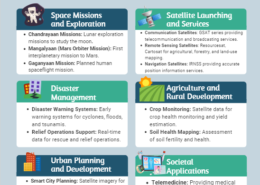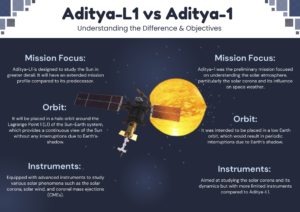Examine the escalating apprehensions regarding space debris and the global endeavors necessary to alleviate the hazards to functional satellites and space missions.
Establishing a permanent human presence on the Moon involves both significant scientific and economic considerations. This initiative has profound implications for the global space race and the future of space exploration. Here's an evaluation of the viability of such a mission: **1. Scientific ViabRead more
Establishing a permanent human presence on the Moon involves both significant scientific and economic considerations. This initiative has profound implications for the global space race and the future of space exploration. Here’s an evaluation of the viability of such a mission:
**1. Scientific Viability
**a. Scientific Research Opportunities
Overview:
- Lunar Research: A permanent lunar base offers opportunities to conduct scientific research on the Moon’s surface, including geological studies, lunar resource utilization, and long-term observations of celestial phenomena.
- Astrobiology and Planetary Science: Studying the Moon can provide insights into the early solar system and the conditions for life.
Potential Benefits:
- Geological Studies: Understanding the Moon’s geology can offer clues about its formation and the history of the solar system.
- Resource Exploration: Researching lunar resources, such as water ice and rare minerals, can pave the way for future space missions and utilization.
Examples:
- Regolith Analysis: Study of lunar soil (regolith) to understand its composition and potential for supporting future missions.
- Helium-3: Investigation of lunar resources like helium-3, which has potential applications in nuclear fusion research.
**b. Technological Advancements
Overview:
- Life Support Systems: Developing and testing life support systems for long-term habitation in lunar environments.
- In-Situ Resource Utilization: Advancements in technology to utilize lunar resources for fuel, building materials, and other needs.
Potential Benefits:
- Sustainable Habitation: Innovations in life support and habitat construction will be critical for sustainable human presence.
- Technology Transfer: Technologies developed for the Moon can have applications in other fields, such as robotics, materials science, and energy.
Examples:
- Habitat Design: Development of habitat modules that can withstand lunar conditions and provide a safe environment for humans.
- Resource Utilization: Technologies for extracting and using lunar water and minerals.
**2. Economic Viability
**a. Cost Considerations
Overview:
- Initial Investment: Establishing a permanent presence on the Moon requires significant initial investment in infrastructure, transportation, and life support systems.
- Operational Costs: Ongoing costs include maintaining the base, resupplying, and supporting human operations.
Potential Costs:
- Infrastructure Development: High costs for building lunar habitats, transportation systems, and communication networks.
- Sustained Operations: Expenses related to daily operations, crew support, and logistics.
Examples:
- Habitat Construction: Investment in constructing and maintaining lunar bases.
- Transportation: Costs associated with launching and landing missions to and from the Moon.
**b. Economic Benefits
Overview:
- Commercial Opportunities: Potential for commercial ventures such as mining, tourism, and research partnerships.
- Innovation and Industry Growth: Economic growth in sectors related to space technology, robotics, and materials science.
Potential Benefits:
- Resource Extraction: Mining lunar resources could become economically viable, providing raw materials for use on Earth or in space.
- Tourism and Industry: Development of space tourism and lunar-related industries could generate revenue and create new markets.
Examples:
- Mining Ventures: Companies exploring the extraction of lunar materials such as helium-3 and rare minerals.
- Tourism: Potential for space tourism involving lunar visits.
**3. Implications for the Global Space Race
**a. Geopolitical Dynamics
Overview:
- Strategic Competition: Establishing a lunar presence could shift geopolitical dynamics, with countries seeking to assert dominance in space exploration.
- International Collaboration: Opportunities for international partnerships and joint missions could also emerge.
Potential Implications:
- Strategic Interests: Nations may compete for lunar territory and resources, influencing global space policies.
- Collaborative Efforts: Collaborative missions and agreements can foster international cooperation and shared benefits.
Examples:
- Space Agreements: New treaties or agreements to manage lunar exploration and resource utilization.
- International Partnerships: Joint missions involving multiple countries working together on lunar projects.
**b. Technological Leadership
Overview:
- Innovation Leadership: Countries and companies leading lunar exploration will likely become leaders in space technology and innovation.
- Market Influence: Those establishing a lunar presence could set standards and influence global space markets.
Potential Implications:
- Technology Transfer: Leadership in lunar technology could lead to technological advancements and transfers to other sectors.
- Market Shaping: Influence over the space market and establishment of lunar infrastructure could shape future space industry trends.
Examples:
- Space Technology: Development of advanced technologies for space exploration and habitation.
- Market Leadership: Companies and nations establishing a foothold in the lunar economy.
**4. Challenges and Risks
**a. Environmental and Safety Risks
Overview:
- Space Environment: Addressing the challenges of the harsh lunar environment, including radiation, temperature extremes, and dust.
- Health and Safety: Ensuring the health and safety of astronauts over long durations.
Challenges:
- Radiation Protection: Developing shielding to protect astronauts from cosmic radiation.
- Habitat Integrity: Maintaining habitat integrity against lunar dust and environmental conditions.
Examples:
- Radiation Shields: Innovations in protective materials and habitats to shield astronauts from radiation.
- Dust Mitigation: Solutions for dealing with lunar dust and its impact on equipment and habitats.
**b. Sustainability and Long-Term Viability
Overview:
- Sustainable Operations: Ensuring that lunar operations are sustainable and that resources are used efficiently.
- Economic Viability: Maintaining economic viability and justifying the continued investment in lunar presence.
Challenges:
- Resource Management: Efficiently managing and utilizing resources to ensure long-term sustainability.
- Economic Justification: Justifying the costs and benefits of continued lunar operations.
Examples:
- Resource Recycling: Development of systems for recycling and reusing resources on the Moon.
- Cost-Benefit Analysis: Ongoing evaluation of the economic benefits and costs of maintaining a lunar base.
Conclusion
Establishing a permanent human presence on the Moon presents significant scientific and economic opportunities, along with substantial challenges. The potential benefits include advancements in technology, scientific research, and new economic opportunities. However, it requires careful planning, investment, and international collaboration to address the associated risks and ensure sustainable operations. The implications for the global space race include shifting geopolitical dynamics, fostering technological leadership, and shaping future space markets. Balancing these factors will be crucial for the success and impact of lunar exploration initiatives.
See less




The Growing Concerns over Space Debris The ever-increasing amount of space debris in Earth's orbit poses a significant threat to operational satellites and ongoing space missions. Space debris includes defunct satellites, spent rocket stages, and fragments from past collisions and explosions, whichRead more
The Growing Concerns over Space Debris
Recent Examples Highlighting the Risks of Space Debris
International Efforts to Mitigate the Risks of Space Debris
The Way Forward: Sustainable Space Exploration
By addressing the growing concerns over space debris through international cooperation and coordinated efforts, UPSC Mains aspirants can demonstrate their understanding of this pressing issue and its implications for the future of space exploration and utilization.
See less